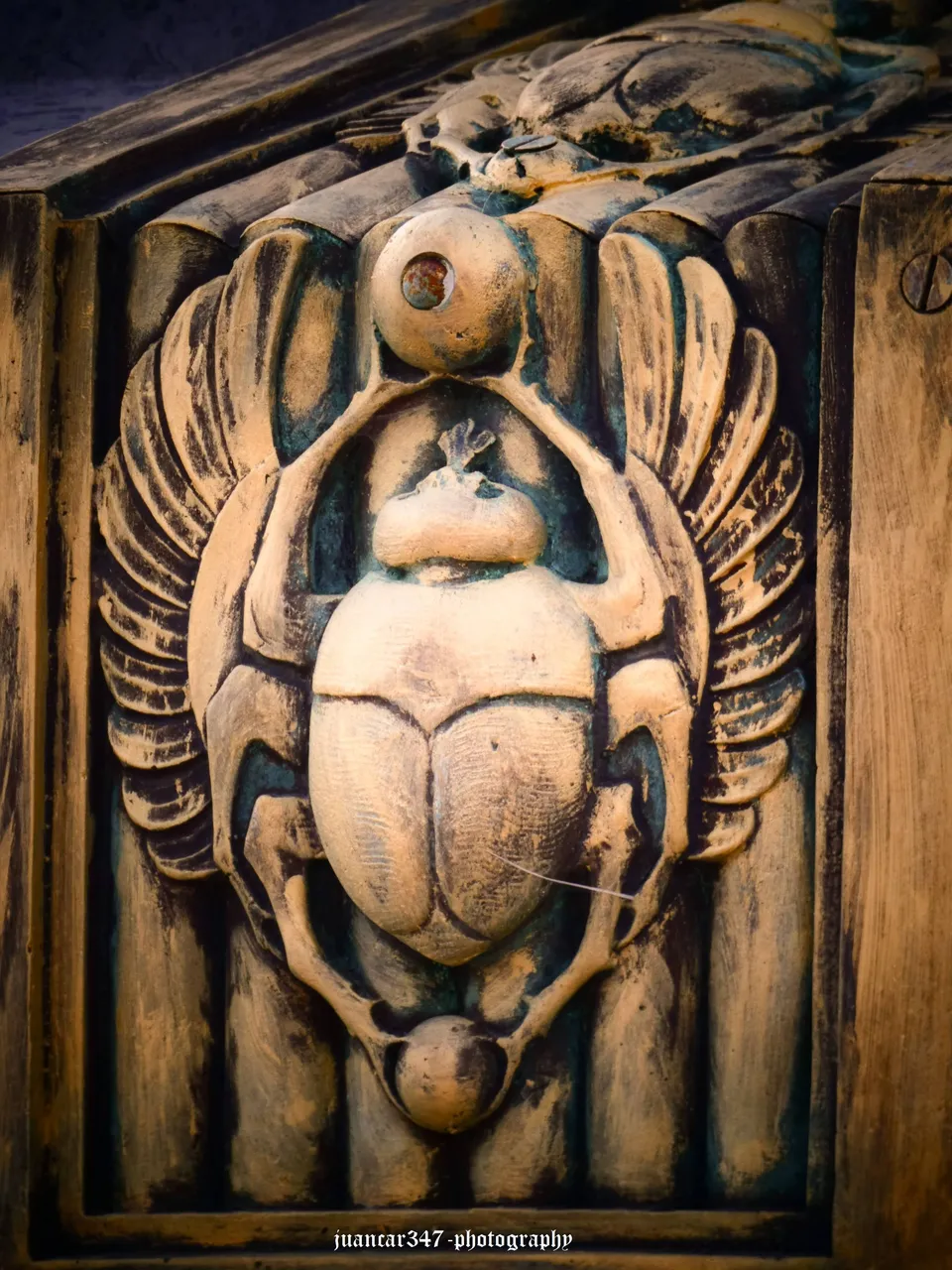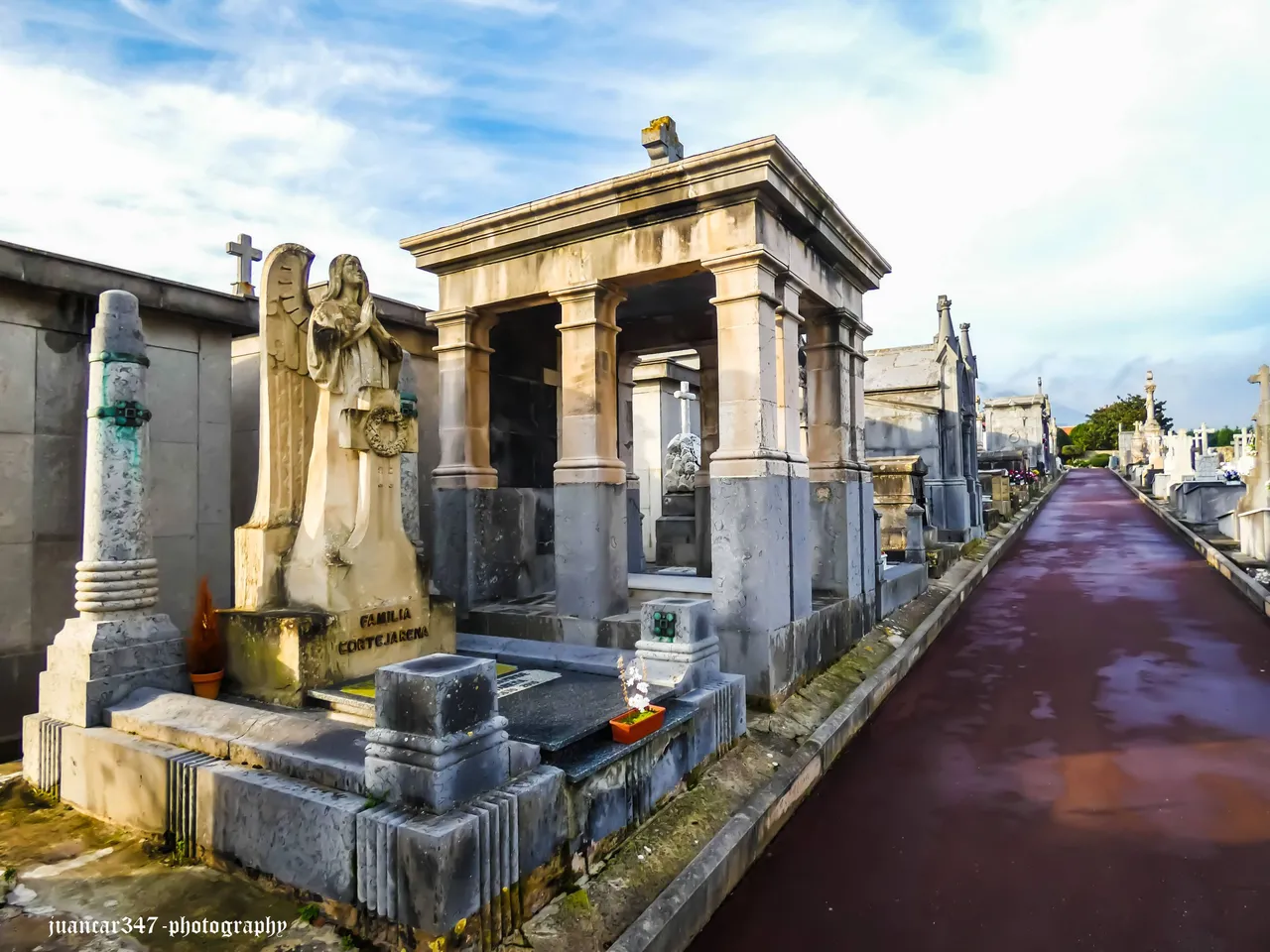
Anyone who visits the pearl of the Cantabrian Sea, the fantastic port town of Castro Urdiales, on the edge of whose cliffs the Romans built the splendid city of Flaviobriga, knows that one of its monumental cultural attractions is located just outside the town center, on a beautiful promontory, at whose foot the waters of a legendary sea lay, in respectful offering. The stories of these seas, if compiled in the form of dreams that, after all, books are, would have little or nothing to envy of the great sagas of literature, written by authors such as Conrad, Melville, and Dafoe, which continue to accompany and inspire generations: the Whale Cemetery.

Although relatively small compared to the vast cities of the dead that dominate the world's major cities, the Whale Cemetery, aside from the terrifying yet inexorable aspect that accompanies all existence, is also a worthy example, where the subtle, the beautiful, and the symbolic come together as a final farewell to the deceased, whose lives, in many cases, summarize, even if only in the form of anecdotes, that subjective hero's journey to which we are condemned from the moment of birth.
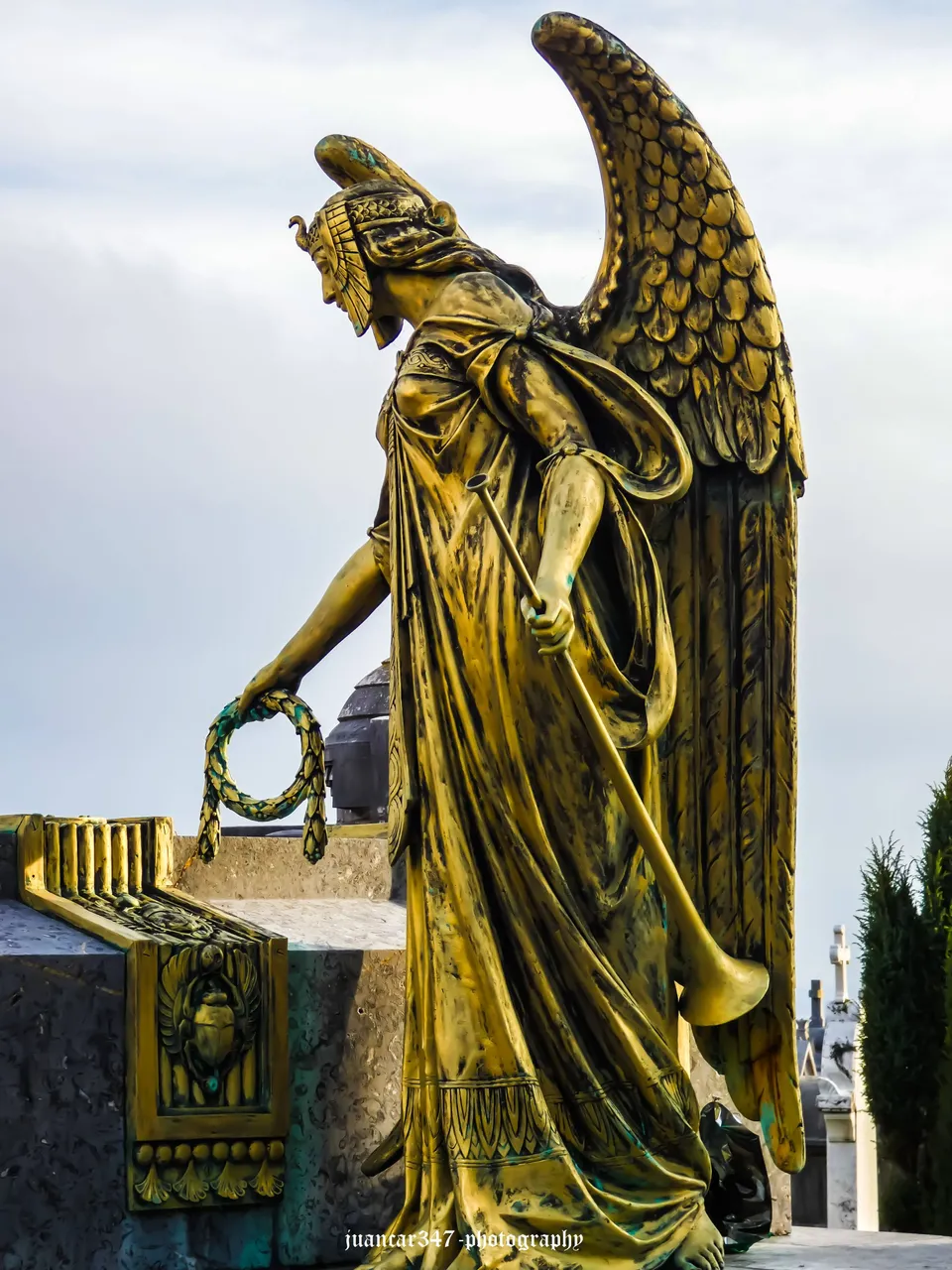
Among its monumental pantheons, fantasy designs that took as their model the ancient and charismatic architectural styles that marked a culture and a form of philosophical expression for centuries, the Romanesque and Gothic, one that stands out above all, under the significant name of Pantheon of Sel, breaks the mold and brings us, through its design and symbolism, closer to ancient models of understanding Art, Architecture and that inexorable hope in another form of existence, such as the extraordinary Egyptian legacy: in fact, designed in 1909 by Ricardo Rucabado as a resting place for his wife's family - paradoxes of life, in the end it was he himself who ended up resting eternally there - it stands out, apart from the traditional symbols of resurrection, such as scarabs, the presence, under the appearance of a female angel playing the uraeus and the famous trumpet of the final judgment, that Universal Mater, known by numerous names in countless ancient cultures, who, appearing in dreams to Apuleius presented her as the goddess Isis, offering a touch of exoticism that is, of course, difficult to surpass.
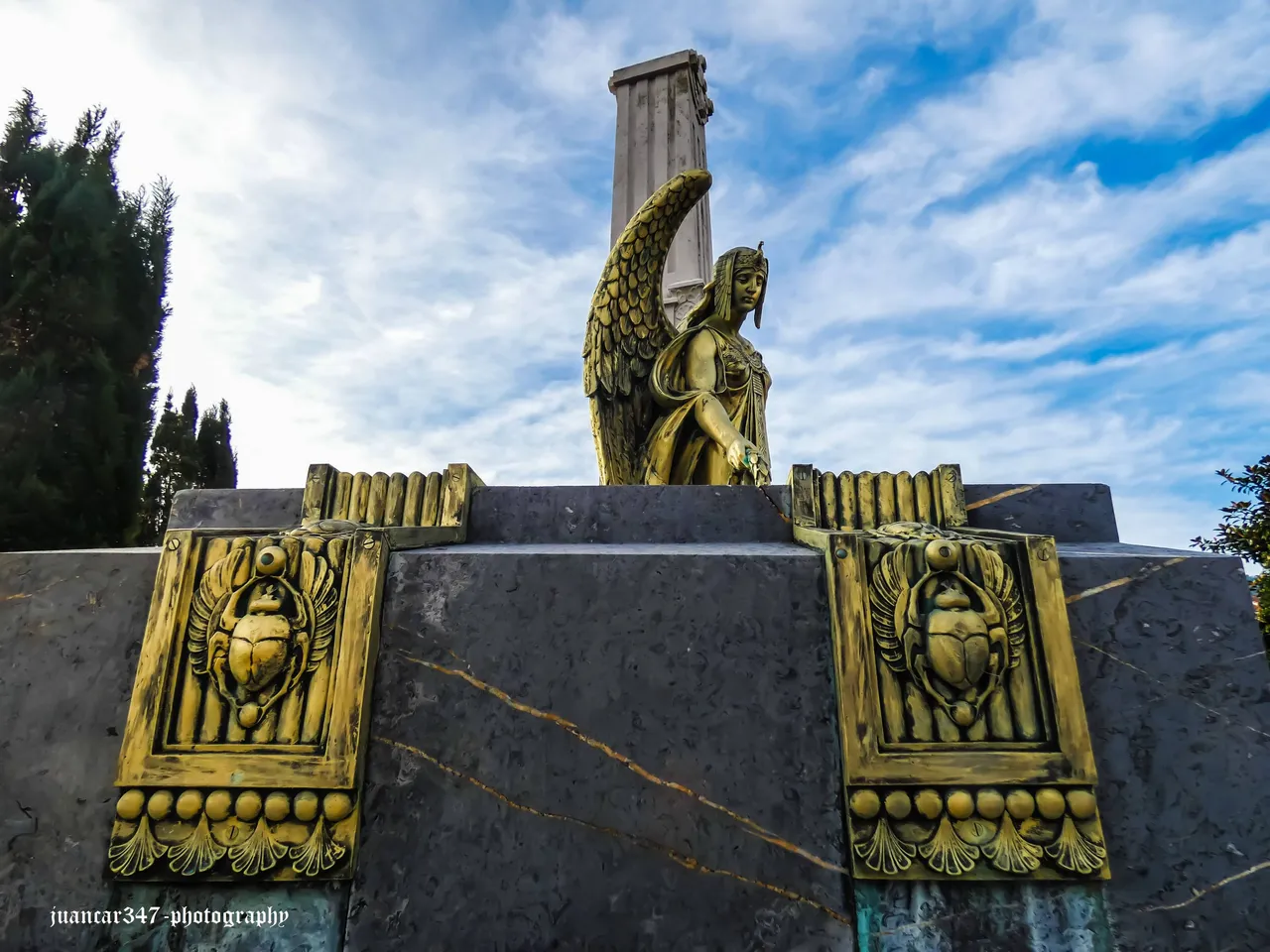
Quien visita esa perla del Cantábrico que es la fantástica villa portuaria de Castro Urdiales, a la vera de cuyos acantilados los romanos construyeron la espléndida ciudad de Flavióbriga, sabe que uno de sus monumentales atractivos culturales se localiza a las afueras del casco urbano, sobre un hermoso promontorio, a cuyo pie se rinden, en respetuosa ofrenda, las aguas de un mar legendario, cuyas historias, si se recopilaran en ese formato de sueños, que, al fin y al cabo, son los libros, poco o nada tendrían que envidiar a las grandes sagas de la Literatura, que, escritas por autores como Conrad, Melville o Dafoe, continúan acompañando e ilusionando a generaciones: el cementerio de Ballena.
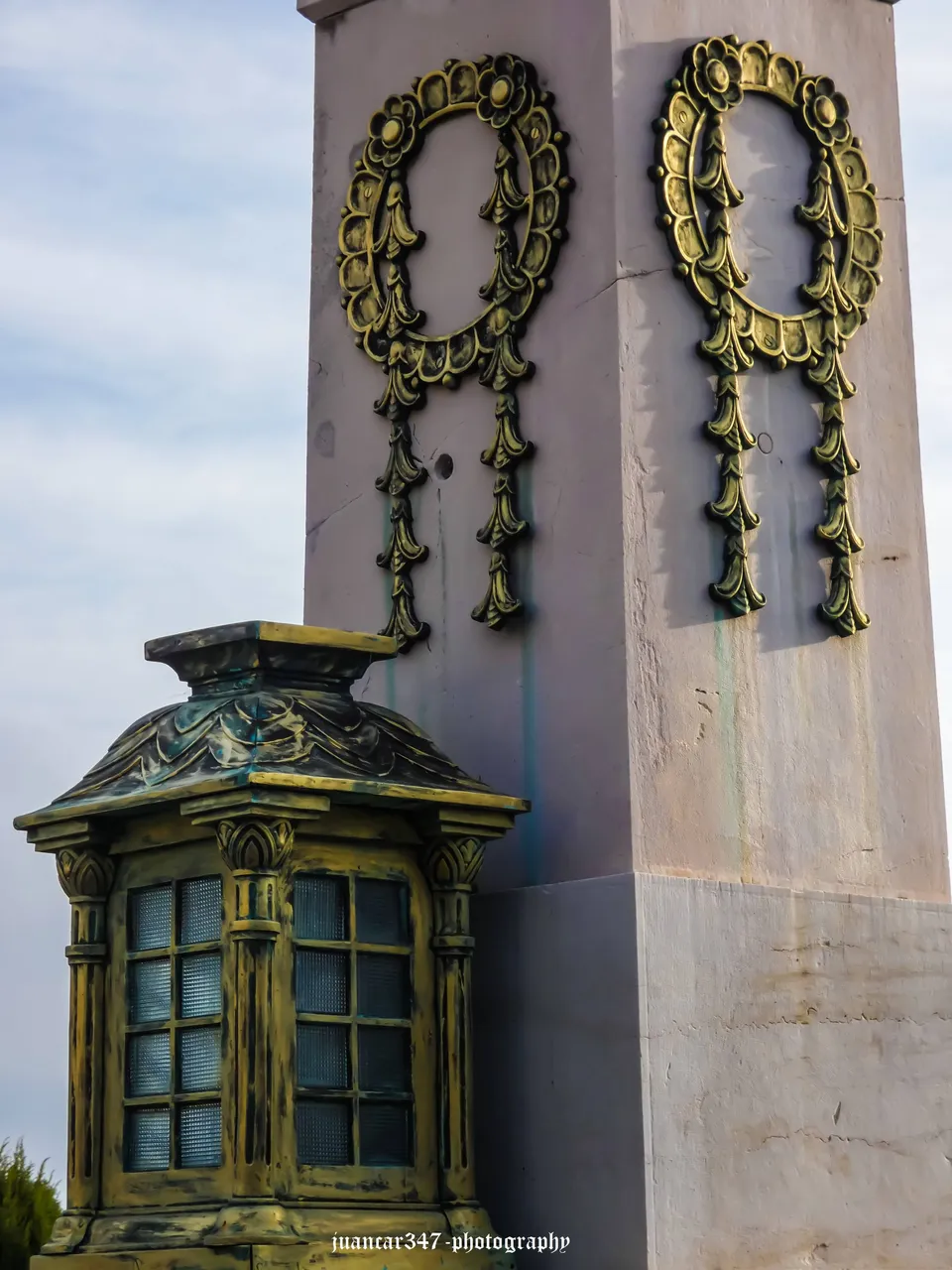
Si bien es relativamente pequeño, comparado con las grandes ciudades de los muertos que copan las principales urbes del mundo, el cementerio de Ballena, dejando a un lado el aspecto aterrador, si bien, inexorable que acompaña a toda existencia, es también un digno exponente, donde lo sutil, lo bello y lo simbólico se reúnen como postrer despedida a unos difuntos, cuyas vidas, en muchas ocasiones, resumen, siquiera sea en forma de anécdotas, ese subjetivo viaje del héroe al que estamos condenados desde el mimo momento de nacer.
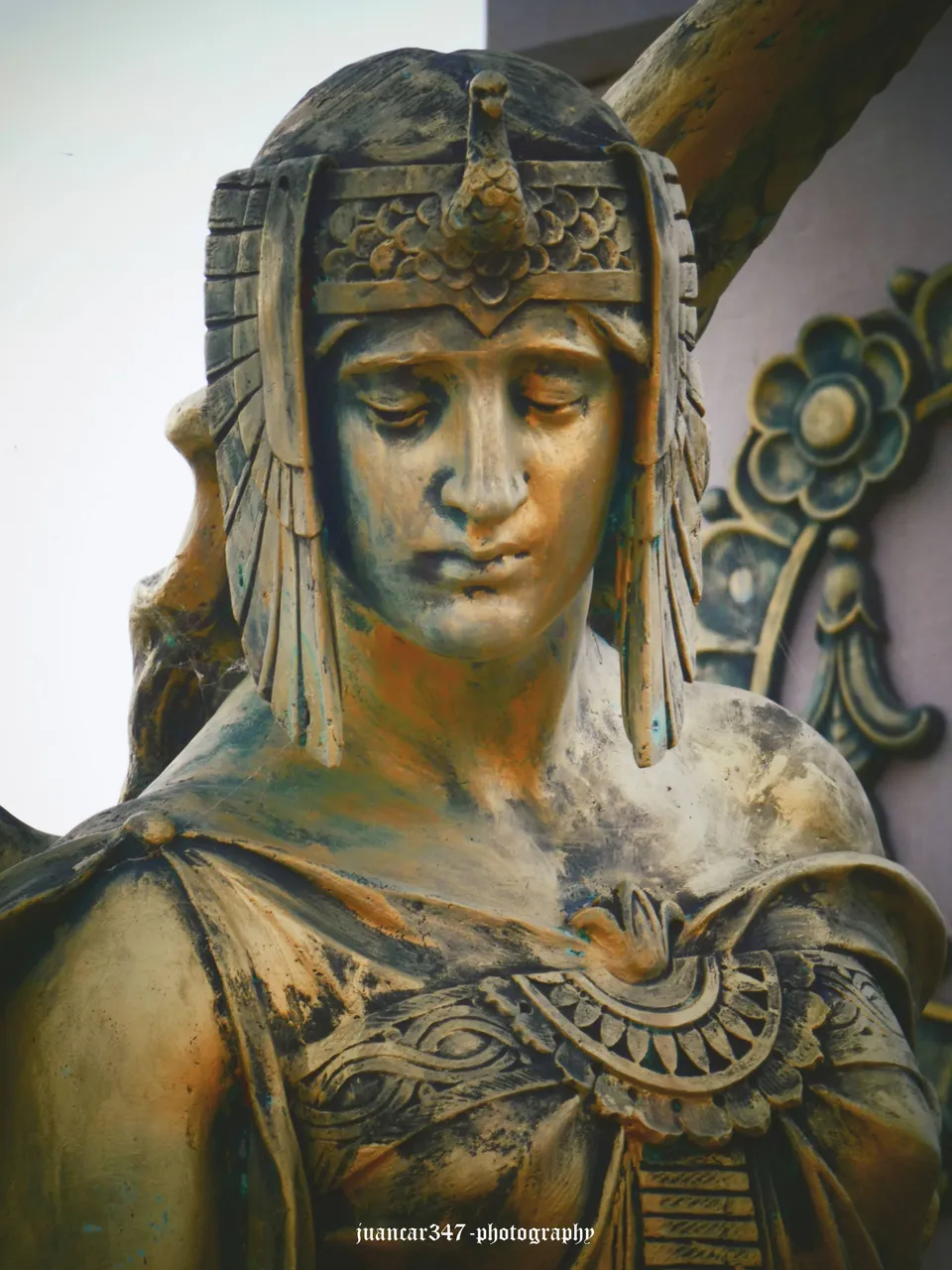
Entre sus monumentales panteones, diseños de fantasía que tuvieron como modelo los antiguos y carismáticos estilos arquitectónicos que marcaron durante siglos una cultura y una forma de expresión filosófica, el románico y el gótico, destaca, sobre todo, aquel, que, bajo el significativo nombre de Panteón del Sel, rompe moldes y nos acerca, por su diseño y simbolismo, a unos modelos milenarios de entender el Arte, la Arquitectura y esa inexorable esperanza en otra forma de existencia, como es el extraordinario legado egipcio: en efecto, diseñado en 1909 por Ricardo Rucabado como lugar de descanso para la familia de su mujer -paradojas de la vida, al final fue él mismo quien terminó reposando eternamente en él- destaca, aparte de los tradicionales símbolos de resurrección, como son los escarabajos, la presencia, bajo la apariencia de un ángel femenino tocado con el ureus y la famosa trompeta del juicio final, esa Mater Universal, que, conocida bajo numerosos nombres en infinitud de culturas antiguas, que, apareciéndose en sueños a Apuleyo, se le presentó como la Diosa Isis, que ofrece una nota de exotismo, difícil, desde luego, de superar.
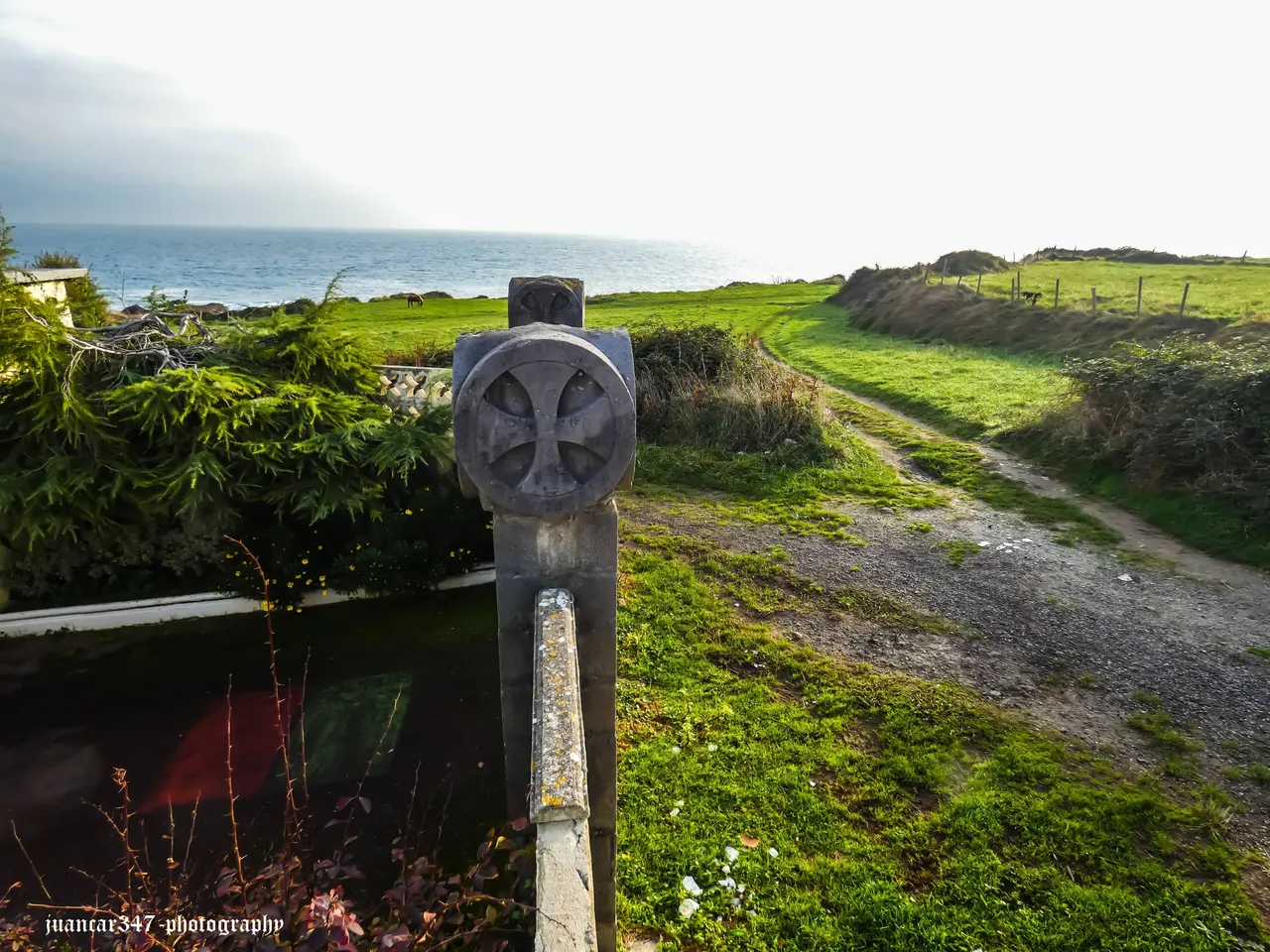
NOTICE: Both the text and the accompanying photographs are my intellectual property and are therefore subject to my copyright.
AVISO: Tanto el texto, como las fotografías que lo acompañan, son de mi propiedad intelectual y por lo tanto, están sujetos a mis Derechos de Autor.
